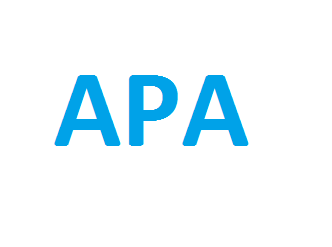
The Academic Perspective Procedia publishes Academic Platform symposiums papers as three volumes in a year. DOI number is given to all of our papers.
Publisher : Academic Perspective
Journal DOI : 10.33793/acperpro
Journal eISSN : 2667-5862
Modal and Stress Analysis of Cellular Structures Produced with Additive Manufacturing by Finite Element Analysis (FEA)
Bekir Yalçın;Berkay Ergene;Uçan Karakılınç
1858
678
Abstract
Cellular structures such as regular/irregular honeycombs and re-entrants are known as lighter, high level flexibility and more efficient materials; these cellular structures have been mainly designed with topology optimization and obtained with new additive manufacturing methods for aircraft industry, automotive, medical, sports and leisure sectors. For this aim, the effect of cellular structures such as the honeycomb and re-entrant on vibration and stress-strain behaviors were determined under compression and vibration condition by finite elements analyses (FEA). In FEA, the re-entrant and honeycomb structures were modeled firstly and then the stress and displacement values for each structure were obtained. Secondly, vibration behaviors of these foam structures were estimated under determined boundary conditions. In conclusion, the effect of topology in foam structures on vibration and mechanical behaviour were exhibited in FEA results. The obtained stress results of FEA show that all stresses (?x, ?y, ?vm, ?xy) are lower on honeycomb structure than reentrant structure. Besides, natural frequency values (?1, ?2, ?3) and appearance of each structure were observed by using FEA.
Keywords:
Cellular structure, honeycomb, re-entrant, finite element analysis, vibration
References
[1] R. Lakes, Foam structures with a negative Poisson’s ratios. Science 235, (1987) 1038–1040.
[2] N. DinhDuc, K. Eock, N. DucTuan, P. Tran, N. DinhKhoa,. New approach to study nonlinear dynamic response and vibration of sandwich composite cylindrical panels with auxetic honeycomb core layer. Aerospace Science and Technology, 2017, 70, 396–404
[3] M. Assidi, J. Ganghoffer. Composites with auxetic inclusions showing both an auxetic behavior and enhancement of their mechanical properties. Compos. Struct, 2012, 94, 2373–2382
[4] H. Wan, H. Ohtaki, S. Kotosaka, et al., A study of negative Poisson’s ratios in auxetic honeycombs based on a large deflection model. Eur. J. Mech., 2014, 23, 95–106.
[5] Y. Prawota, Solid Mechanics for Materials Engineers: Auxetic materials seen from the mechanics point of view, Chapter 15, USA, 2013.
[6] F. Scarpa and G. Tomlinson. Theoretical characteristics of the vibration of sandwich plates with in-plane negative Poisson’s ratio values. Journal of Sound and Vibration, 2000, vol. 230(1).
[7] X.W. Zhang and D.Q. Yang. A novel marine impact resistance and vibration isolation cellular base. Journal of Vibration and Shock, 2015, 34(10), 40–45.
[8] R. S. Lakes and K. Elms. Indentability of conventional and negative Poisson’s ratio foams. Journal of Composite Materials, 1993, 27(12), 1193–1202.
[9] D. Mousanezhad, H. Ebrahimi, B. Haghpanah, R. Ghosh, A. Ajdari, A.M.S. Hamouda, A. Vaziri. Spiderweb honeycombs. International Journal of Solids and Structures, 2015, 66, 218–227.
[10] C. Yang , H. Vora and Y. Chang. Behavior of auxetic structures under compression and impact forces. Smart Mater. Struct., 2018, 27(2), 1-12.
[11] B. Gorny, T. Niendorf , J. Lackmann, M. Thoene, T. Troester and H. J. Maier. In situ characterization of the deformation and failure behavior of non-stochastic porous structures processed by selective laser melting. Mater. Sci. Eng. A, 2011, 528(27), 7962–7967.
[12] V. Weißmann, J. Wieding , H. Hansmann, N. Laufer, A. Wolf and R. Bader. Specific yielding of selective laser-melted Ti6Al4v open-porous scaffolds as a function of unit cell design and dimensions. Metals, 2016, 6(7), 1-19.
[13] S. Li, H. Hassanin, M.M. Attallah, N.J. Adkins, K. Essa. The development of TiNi-based negative Poisson’s ratio structure using selective laser melting. Acta Mater., 2016, 105, 75–83.
[14] O. Rehme and C. Emmelmann. Selective laser melting of honeycombs with negative poisson’s ratio. JLMN-Journal of Laser Micro/Nanoengineering, 2009, 4(2), 128-134.
[15] P. Dziewit, P. Platek, J. Janiszewski, M. Sarzynski, M. Grazka, R. Paszkowski. Mechanical response of additive manufactured regular cellular structures in quasi-static loading conditionsPart I experimental investigations. Proceedings of the 7th International Conference on Mechanics and Materials in Design, 2017, 1061-1074.
[16] A. Ingrole, A. Hao, R. Liang. Design and modeling of auxetic and hybrid honeycomb structures for in-plane property enhancement. Materials and Design, 2017, 117, 72–83.
[17] B. Pandaa, M. Leitea, B. B. Biswalb, X. Niuc, A. Gargc. Experimental and numerical modelling of mechanical properties of 3D printed honeycomb structures. Measurement,2018, 116, 495–506.
[18] L. Yang, O. Harrysson, H. West, D. Cornier. Mechanical properties of 3D re-entrant honeycomb auxetic structures realized via additive manufacturing. International Journal of Solids and Structures, 2015, 69–70, 475–490.
[19] L. Yang, O. Harrysson, H. West, D. Cornier. Compressive properties of Ti–6Al–4V auxetic mesh structures made by electron beam melting. Acta Materialia, 2012, 60, 3370–3379.
[20] N. Novak, N. Vesenjak, M. Ren, Z. Nejc, M. Vesenjak, Z. Ren. Auxetic Cellular Materials - a Review. Journal of Mechanical Engineering, 2016, 62(9), 485-493.
[21] SLM/DMLS Titanium Ti6Al4V, Crp Meccanica, https://www.crpmeccanica.com/PDF/SLM-DMLS_TitaniumTi6Al4v_CRP.pdf, Last access:15.05.2018
[22] K.E. Evans, K.L. Alderson. Auxetic materials: the positive side of being negative. Eng. Sci. Edu. J., 2000, 9, 148-154.
[23] E.A. Friis, R.S. Lakes, J.B. Park. Negative Poisson’s ratio polymeric and metallic materials. J. Mater. Sci., 1988, 4406-4414.
[24] G.N. Greaves, A.L. Greer, R.S. Lakes, T. Rouxel. Poisson’s ratio and modern materials. Nature Materials,2011, 10, 823-837.
[25] J.B. Choi, R.S. Lakes. Fracture toughness of re-entrant foam materials with a negative Poisson’s ratio: experiment and analysis. Int. J. Fracture., 1996, 80, 73-83.
[26] S. Yang, C. Qi, D. Guo, D. Wang. Energy absorption of an re-entrant honeycombs with negative poisson’s ratio. Applied Mechanics and Materials,2012, 148-149, 992-995.
[27] G. Dong, L. Yang, Y. Gao, D. Liu. An efficient energy absorbing structure inspired by energy harvesting device. International Conference on Modeling, Simulation and Optimization (MSO 2018), 2018, 450-455.
Cite
-
 @article{acperproISITES2018ID52, author={Yalçın, Bekir and Ergene, Berkay and Karakılınç, Uçan}, title={Modal and Stress Analysis of Cellular Structures Produced with Additive Manufacturing by Finite Element Analysis (FEA)}, journal={Academic Perspective Procedia}, eissn={2667-5862}, volume={1}, year=2018, pages={263-272}}
@article{acperproISITES2018ID52, author={Yalçın, Bekir and Ergene, Berkay and Karakılınç, Uçan}, title={Modal and Stress Analysis of Cellular Structures Produced with Additive Manufacturing by Finite Element Analysis (FEA)}, journal={Academic Perspective Procedia}, eissn={2667-5862}, volume={1}, year=2018, pages={263-272}} -
 %0 Academic Perspective Procedia (ACPERPRO) Modal and Stress Analysis of Cellular Structures Produced with Additive Manufacturing by Finite Element Analysis (FEA)% A Bekir Yalçın , Berkay Ergene , Uçan Karakılınç% T Modal and Stress Analysis of Cellular Structures Produced with Additive Manufacturing by Finite Element Analysis (FEA)% D 11/9/2018% J Academic Perspective Procedia (ACPERPRO)% P 263-272% V 1% N 1% R doi: 10.33793/acperpro.01.01.52% U 10.33793/acperpro.01.01.52
%0 Academic Perspective Procedia (ACPERPRO) Modal and Stress Analysis of Cellular Structures Produced with Additive Manufacturing by Finite Element Analysis (FEA)% A Bekir Yalçın , Berkay Ergene , Uçan Karakılınç% T Modal and Stress Analysis of Cellular Structures Produced with Additive Manufacturing by Finite Element Analysis (FEA)% D 11/9/2018% J Academic Perspective Procedia (ACPERPRO)% P 263-272% V 1% N 1% R doi: 10.33793/acperpro.01.01.52% U 10.33793/acperpro.01.01.52
© Academic Perspective 2018. All rights reserved.



